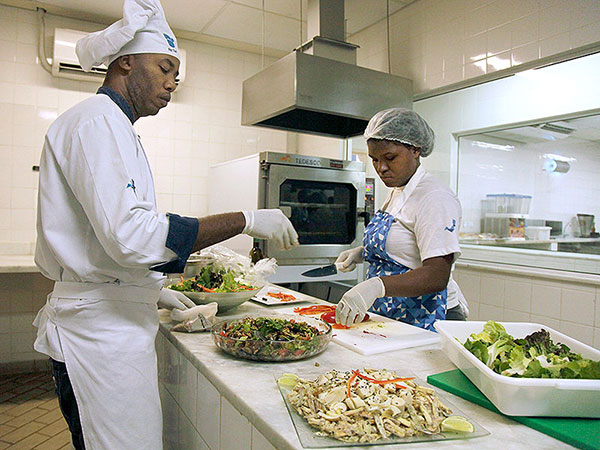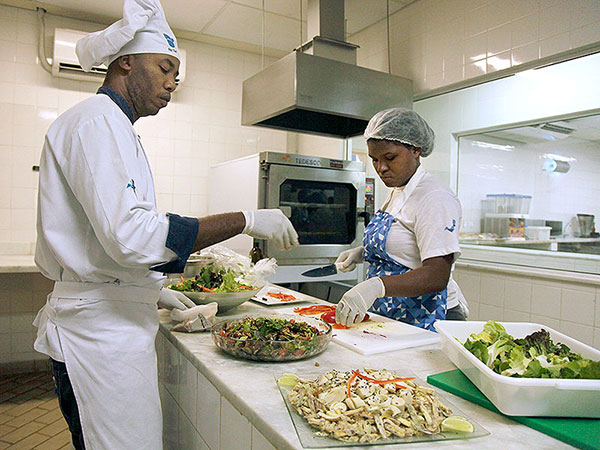Ever wonder what it’s like to dine like an Olympian? Rio officials have assured athletes that food provided for them this year will be a success – with almost all of the ingredients and meats coming straight from Brazil (except for the kimchi, of course, which will be flown in from Korea).
Here’s what you need to know about the cuisine at this year’s Olympic Games.
1. The food operation is massive.
The athlete dining area in the Olympic village is bigger than two football fields put together and the kitchen will be the size of one football field. The Olympic village plans to serve 60,000 meals a day from 460,000 lbs. of raw ingredients – all served on biodegradable plates. “We always face the same challenges, the transport, the volume of food,” Deborah Cordiner, who handles athletes’ food at venues, told The Associated Press.

2. Athletes can “eat all they want.”
Although “kilo restaurants” – where the price of a meal is determined by the weight of the plate – are extremely popular in Rio de Janeiro, food will be served buffet style. “They can eat all they want… We know athletes know exactly what they need to eat,” Marcello Cordeiro, Rio’s director of food and beverages, told AP. Diners will be able to choose from five different cuisine types – Brazilian, Asian, International, Pasta and Pizza, and Halal and Kosher. For athletes not accustomed to hot foods, Cordeiro promises the chefs are “very careful with spice.”
3. Variety will not be an issue.
Olympic grub will be accommodating for nearly every taste bud and dietary restriction. Kimchi — Korea’s famous fermented cabbage — will be shipped directly from the country, and food for Muslim and Jewish athletes will adhere to their respective religious laws. Conflicting breakfast palettes will even be taken into consideration (for the Japanese, rice and miso soup will be offered).
4. Local cuisine takes precedent.
While the buffets are guaranteed to be diverse and representative, officials say they are going to cook “a bit more” Brazilian fare than any other type of cuisine. “We are confident our Brazilian food is going to be a success. We are doing our best to bring the world to Brazil,” said Cordeiro. Athletes will be able to sample 40 types of Brazil’s exotic, native fruits including maracuja, caju and acai. Key savory ingredients in Brazilian dishes – including rice, local meats, black beans and farofa (a dish consisting of toasted flour, bacon and spices) – will be incorporated into meal offerings.
5. Steroid-free is a must.
A big concern for chefs feeding Olympic athletes is ensuring there are no hormones in meats that could potentially throw off a doping test. Especially worrisome is a steroid called Clenbuterol that is fed to livestock. “To assure that our ingredients are free of steroids and other kinds of chemicals, we are making sure our suppliers have all the certificates that are demanded by our national food and drug agency. People don’t know how complex it is to put out safe food. We know that this is a very sensitive subject that could influence a result or an athlete’s medal,” said Cordeiro.





